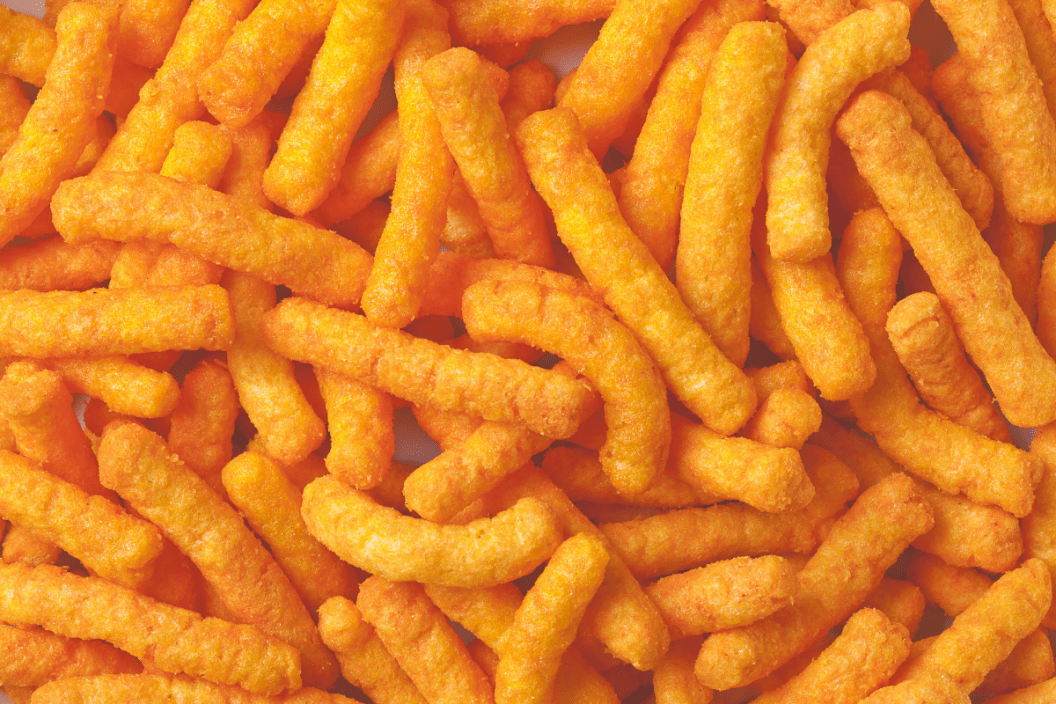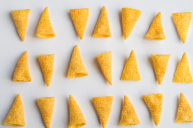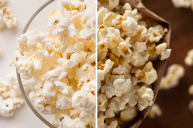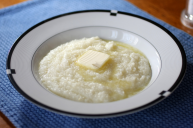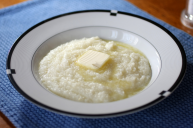Have you ever wondered where cheese puffs - those finger-staining, pirate's booty, cheddar cheese, edible snacks made ever popular by a neon-orange cheetah with sunglasses and an attitude (aka Cheetos) - came from? Would it surprise you to learn they weren't originally meant for human consumption at all? Sometimes truth is stranger than fiction, and that's certainly the case with everyone's favorite junk food, the cheese curl.
Videos by Wide Open Country
As Ernie Smith with Atlas Obscura tells it, the story of the cheese curl begins in the 1930s in the Midwestern agricultural center of Wisconsin, inside the production center of the Beloit-based Flakall Corporation, a manufacturer of animal feed.
To produce stock feed, the Flakall Corp. placed the raw material in a grinder, which flaked out the corn (hence the name, "flake-all") and took as much as possible from the grain, as well as smoothing out any sharp edges. So is it safe to say Cheetos are basically a corn meal?
As all do, Flakall's patented machine needed upkeep and, more regularly, cleaning, and workers were soon coming up with tricks to keep it from clogging. One method involved pouring a ration of damp corn into the grinder.
Here, however, something funny happened that would change the course of snacking history forever. The moist corn came into contact with the friction-generated heat of the machine and, as it left the grinder, no longer flaked - it puffed out, like popcorn without any of the sharp kernels left.
If this all seems a bit technical, this clip from BBC One's "Food Factory" should help:
From the byproducts of the production of animal feed, the corn puff was born.
An eagle-eyed foreman named Edward Wilson saw these byproducts, took a few home with him, seasoned them and the rest, one might say, is history. Today, you probably have an 8 oz bag of it in your pantry.
Wilson's Korn Kurls, as he called them, would stand as the progenitor of all puffed corn snacks to follow.
Soon after, Flakall filed a second patent in 1939, titled "Process for preparing food products." Flakall Corporation soon changed its named to Adams Corporation, in part an effort to distract people from the simple truth: They were snacking on something intended for livestock.
Of course, this origin story is contested. The Louisiana Elmer Candy Corporation claims its Chee Wees are the true "original" cheddar cheese curl. And in the 1950s, Old London Foods introduced its Cheez Doodles, which soon became a popular household name. We have to wonder, does the same go for cheese balls? This cheese culture is fascinating!
One things for sure. these crunchy cheese are not gluten-free or of natural flavor. They are also high in cholesterol, trans fat and carbohydrates. Do with that information as you wish. But you can find baked cheese curls if that helps. We can't tell you if that's real cheese, too, though.
Have you ever wondered where your favorite foods came from? We still have potato chips, pretzels, corn chips, tortilla chips and white cheddar cheese snacks to explore. Let us know in the comments what you want us to look into next!
